Advertisement
Orange you glad it's citrus season? Try these savory and sweet recipes
Resume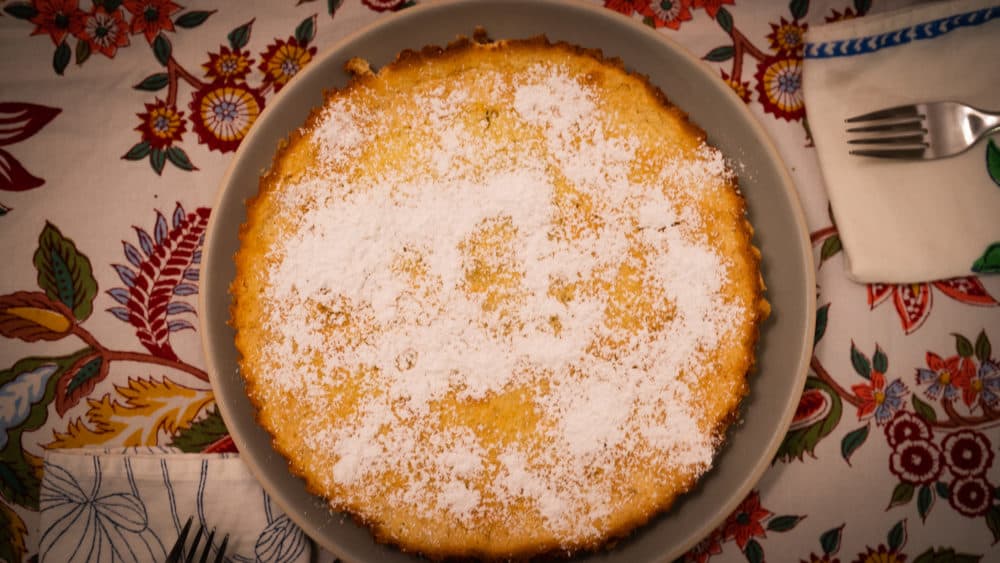
There are many reasons to spend time in southern California during the winter months. The sunshine, warm temperatures and cold, clear nights are among them. But there are many other gifts to discover. For me, they come in a variety of shapes, sizes, and colors. During my time in Los Angeles this winter I have become obsessed with citrus.
Every day I walk around the city. Just next door to where we are staying, in front of a green house with a front yard full of cacti, are two grapefruit trees. The bright yellow citrus hangs there, dozens on each tree taunting me. The apartment complex around the corner boasts lemon, tangerine and orange trees. The Spanish-style house a few blocks away has a kumquat tree dripping with quarter-sized orange fruit next to a Meyer lemon tree that looks to have closer to 100 yellow orbs hanging from the branches. What all these homes have in common is that no one, I repeat no one, seems to appreciate this bounty. The citrus remains on the trees day after day, week after week, while I walk by in envy.
So I did a little research. There’s some controversy about whether or not it is “legal” to take fruit from trees and bushes on private land that overhangs a public street. I have no intention of getting arrested or yelled at by neighbors for gleaning citrus, so I’ve tried to make friends. “Gorgeous grapefruit,” I said pleasantly as I walked by a neighbor's front lawn. “Oh, thanks. I hate grapefruit. Take whatever you want!” Needless to say, this man is now my new best friend. The aforementioned Meyer lemon tree? Well, let’s just say that one day when I was walking by there were four perfectly ripe lemons hanging over the sidewalk begging to be picked. Did I? Well, you’ll just have to use your imagination.
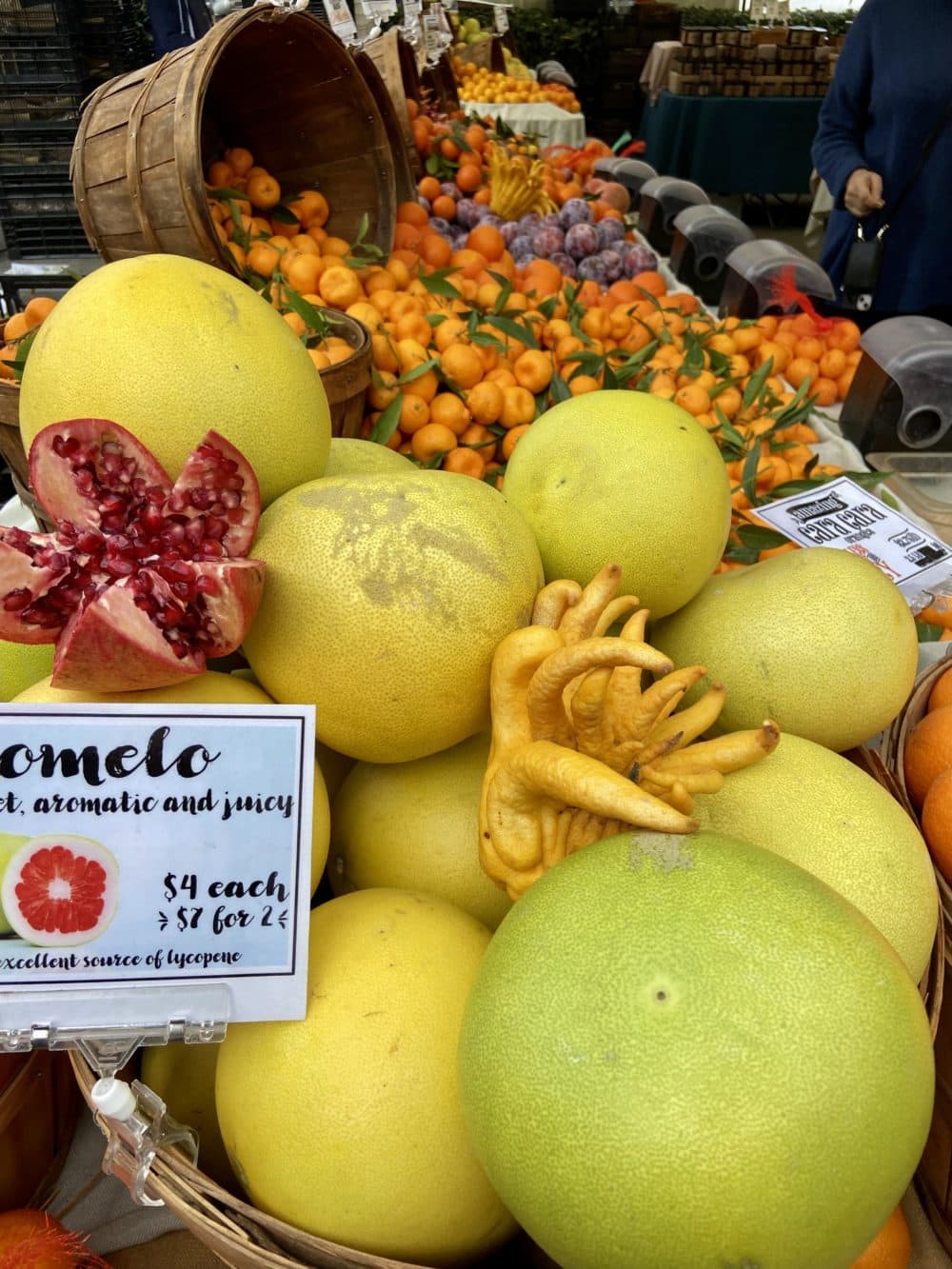
Farmers markets in southern California sell every type of citrus imaginable. From five or six varieties of lemons to multiple varieties of oranges, tangerines, kumquats, grapefruit and more. The bright colors, the acidic sweetness makes the winter months feel like a celebration.
Wherever you live grocery stores are stocked with fresh winter citrus. Here are three new recipes to help you explore the possibilities. Yes, citrus is great for snacking but they also work in sauces, salads, vinaigrettes, stir fries, and dessert.
California citrus salad with dates, feta, and pistachios with citrus vinaigrette
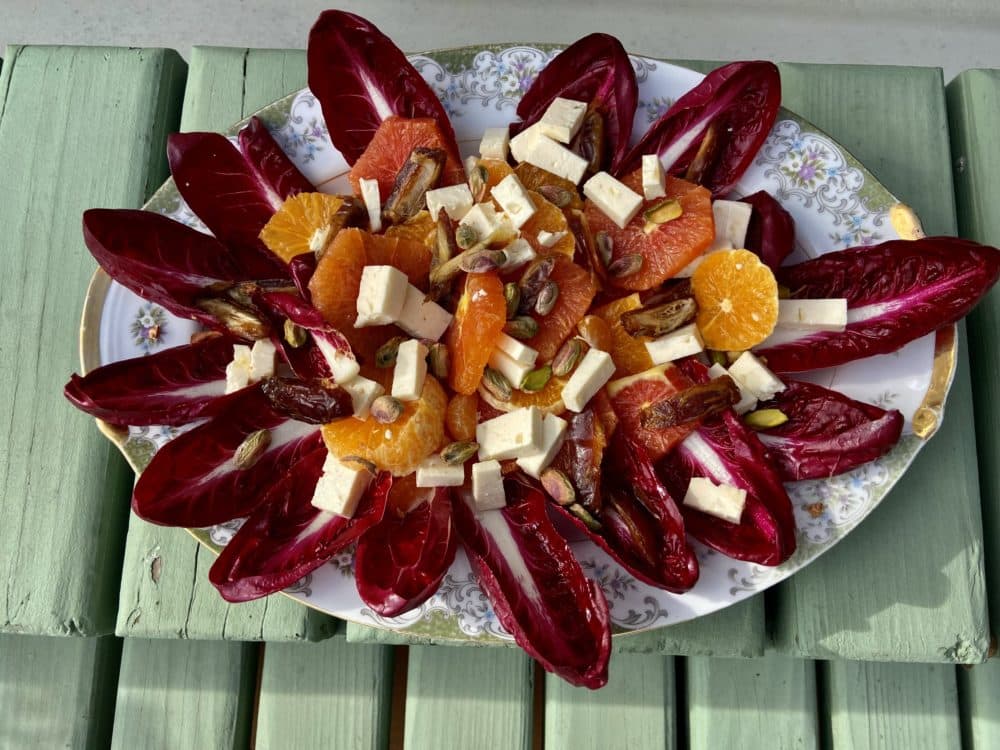
This salad can be served as a first course, side dish, or as a main course for a light lunch. A warm, crusty baguette is ideal to soak up the citrus juices.
Serves 2 to 4.
Ingredients
The Salad:
- 2 tangerines
- 2 Cara Cara oranges or navel oranges
- 2 blood oranges, or 1 small to medium pink or white grapefruit
- 1 small head radicchio, or 1 cup bitter greens like arugula
- 6 dates, pitted, and cut into thin slices
- ½ cup shelled salted pistachios, coarsely chopped
- ½ cup cubed feta cheese, or crumbled goat cheese
Citrus vinaigrette:
- 1 teaspoon mustard
- Salt and pepper to taste
- Juice from orange peels use for salad
- Juice from 1 lemon or Meyer lemon
- ¼ cup olive oil
Instructions
- Peel the citrus by either cutting it off with a small sharp knife or peeling it off with your hands. Be sure to keep the peels for the vinaigrette. Thinly slice the citrus. If using very small tangerines you can simply peel and separate into sections. Remove any seeds.
- Arrange the radicchio or greens on a medium-sized serving plate. Arrange the citrus on top, alternating types of citrus (one slice of Cara Cara and then a slice of tangerine and then a slice of blood orange, etc.). Sprinkle the dates, pistachios, and feta on top.
- To make the citrus vinaigrette: In a small bowl mix the mustard, salt and pepper. Squeeze any juice still attached to the peel from the fruit you used for the salad into the mustard. (If you peeled the fruit and there’s no fruit still attached to the peel you can grate the peels and add ½ teaspoon grated zest to the vinaigrette.) Add the lemon juice and olive oil and mix until blended. Taste for seasoning and add more salt and pepper to taste.
- Spoon half the vinaigrette on top of the salad and serve the remaining vinaigrette on the side.
Sichuan-style orange chicken
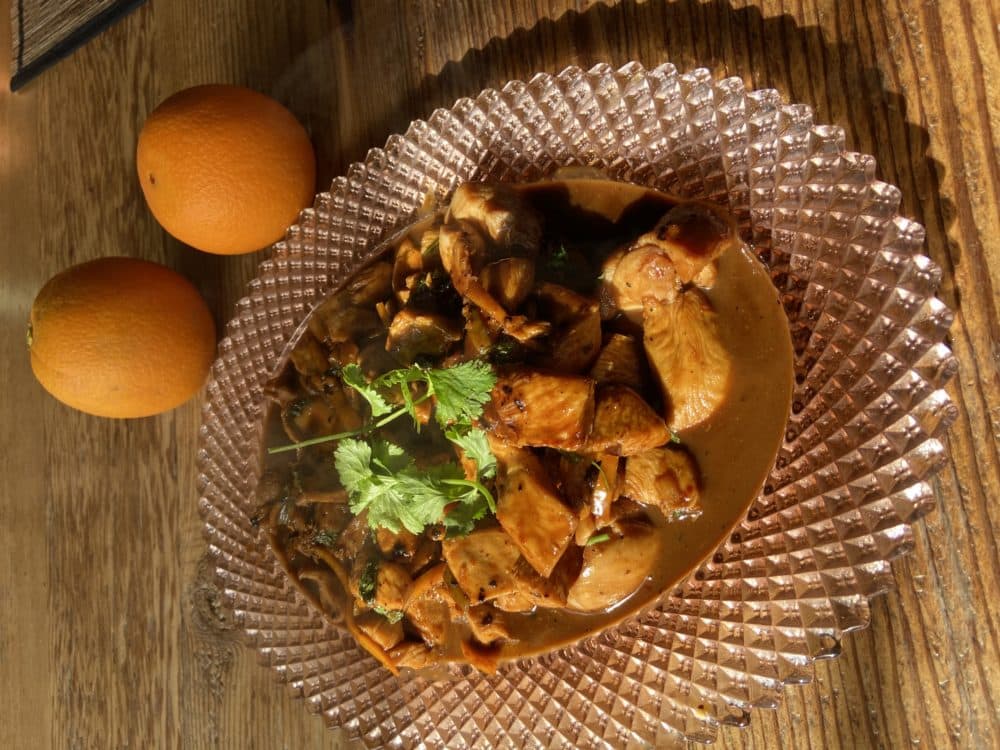
This is a loose adaptation of a classic Sichuan-American dish, orange chicken. Orange juice, zest, and thin slices of peel add a bright flavor to the stir fry and the spice comes from chili peppers or chili crisp.
Marinate chunks of boneless chicken thighs (and/or breasts) in orange juice, cornstarch, and orange zest for at least 15 minutes. A quick sauce is made from lots of chopped fresh ginger, scallions, chilis, orange juice, soy sauce and rice wine or black vinegar and the whole dish is stir-fried in minutes. Top the chicken with grated orange zest, chopped scallions, salted peanuts, and fresh cilantro sprigs and serve with steamed white or brown rice and hot sauce or chili crisp on the side. This is a quick, easy dish for any weeknight.
This recipe makes enough for a main course for 2 or can feed 4 along with several other dishes. But it can easily be doubled or tripled to feed a larger group.
Serves 2 to 4.
Ingredients
The chicken and marinade:
- 1 pound boneless chicken thighs and or breasts, cut into ½-inch size pieces
- 1 tablespoon cornstarch
- 1 tablespoon soy sauce or tamari
- 1 teaspoon grated orange zest
- ⅓ cup orange juice, preferably fresh squeezed from the orange you zested
- About 2 tablespoons peanut or vegetable oil
The orange sauce:
- 2 tablespoons chopped fresh ginger
- 2 scallions, white and green sections, finely chopped
- 4 small dried red chilis or ½ to 1 teaspoon chili crisp* or chili paste or hot pepper sauce of your choice
- 2 tablespoons soy sauce or tamari
- 2 tablespoons rice wine or black vinegar**
- ½ teaspoon orange zest
- 1 tablespoon thinly sliced orange peel***
- ¼ cup orange juice, preferably fresh squeezed from the orange you zested
- 1 tablespoon sugar
- 3 tablespoons coarsely chopped fresh cilantro or parsley
Optional garnishes
- 2 scallions, white and green sections, finely chopped
- 1 tablespoon cilantro or parsley, very coarsely chopped
- ½ teaspoon grated orange zest
- ½ cup salted peanuts
- White or brown rice
*Chili crisp is a spicy condiment made from oil, garlic, chilis and other seasonings.
**Black vinegar has a slightly sweet, sour flavor. It is made from fermented black sticky rice or regular glutinous rice and often male vinegar. It is sold in Asian food markets.
**Use a vegetable peeler to peel off strips of the orange peel (without the bitter white pith) and then very thinly slice the peels.
Instructions
- Marinate the chicken: In a large bowl toss the chicken with the cornstarch so it coats all the pieces. Add soy sauce, orange zest and orange juice and toss. Let sit at room temperature for at least 15 minutes, or up to 12 hours, covered and refrigerated.
- While the chicken marinates, make the sauce: in a medium bowl mix the ginger, scallions, chilis or chili paste, soy sauce, vinegar, orange zest, orange peel, and juice, and sugar until well combined. Set aside.
- When ready to stir fry: Remove the chicken from the refrigerator if you marinated it ahead and bring it close to room temperature, about 15 minutes.
- In a wok or large, heavy skillet, heat the oil over high heat. Add the chicken and marinade and cook for about 4 to 5 minutes, tossing it occasionally, until it begins to brown. Pour the sauce on top and cook, stirring frequently, another 4 to 5 minutes (depending on the heat of your stovetop) or until the sauce has thickened considerably and the chicken is cooked through. (Remove a piece and cut it in half to make sure it’s cooked through.) Taste the sauce for seasoning, adding more chili paste or vinegar if needed. Remove whole chilis if using. Stir in the chopped cilantro and remove from the heat. Place on a serving plate or bowl, and top with any or all of the toppings. Serve immediately.
Lemon bars from Valery Lomas
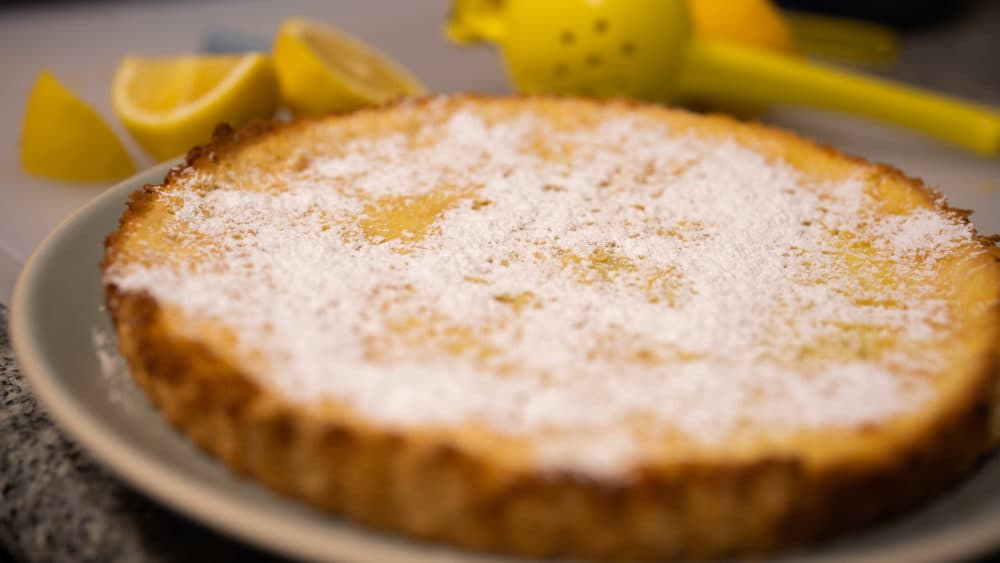
These bars are bursting with a bright, tangy, lemony flavor, but what’s truly unique about them is that cookbook author/baker Vallery Lomas figured out a way to make lemon curd without spending time cooking it on the stovetop.
This recipe originally appeared in "Rage Baking" by Kathy Gunst and Katherine Alford (Simon & Schuster, 2020). Vallery Lomas is the author of Life is What You Bake It and the winner of the Great American Baking Show.
The bars can also be made in a round 9-inch fluted tart pan but you will have some excess filling. I took the excess filling and placed it in a large ovenproof ramekin and baked it for about 20 minutes with the tart until it begins to turn a pale golden color and doesn’t appear wet when gently jiggled.
Makes 12 bars. Serves 6 to 12.
Ingredients
For the crust:
- Cooking spray
- 1 ¼ cup (150 grams) all-purpose flour
- ⅓ cup confectioners’ sugar
- ¼ teaspoon fine salt
- 1 ¼ sticks unsalted butter, melted
- 1 teaspoon lemon extract, optional
For the lemon filling:
- 4 large eggs
- 1 ½ cups granulated sugar
- Finely grated zest of 3 lemons or Meyer lemons (about 1 heaping tablespoon)
- ½ cup fresh lemon or Meyer lemon juice (from the 3 lemons you zested)
- ¼ cup (30 grams) all-purpose flour
- ½ teaspoon baking powder
- ½ teaspoon fine salt
- Confectioners' sugar, for dusting
Instructions
- Make the crust: Position a rack in the center of the oven and preheat the oven to 350 degrees. Line an 8-inch square baking pan with two rectangles of parchment paper, overlapping them so they are perpendicular to each other and leaving a couple of inches of parchment overhanging the sides. Lightly spray the parchment paper with cooking spray and set aside.
- Whisk together the flour, confectioners’ sugar, and salt in a large bowl. Stir in the melted butter and lemon extract if using until combined. Use your hands to press the mixture over the bottom of the prepared pan in an even layer. Bake for 15 minutes.
- Meanwhile, make the filling: In a medium bowl using a handheld mixer, beat the eggs on medium speed until light and foamy. Sprinkle in the granulated sugar and beat until the mixture is pale yellow, light and voluminous, 3 to 4 minutes. Reduce the speed to low and whisk in the lemon zest, lemon juice, flour, baking powder, and salt.
- Pour the filling into the hot crust (no need to let it cool). Bake for 25 to 28 minutes, until the filling is lightly browned on top and doesn’t appear wet or jiggle when you gently shake the pan. Set the pan on a wire rack and let cool to room temperature, then refrigerate for at least 1 hour or freeze for 30 minutes to set before serving.
- Use the overhanging parchment, gently lift the lemon bars out of the pan and transfer to a cutting board. Cut into 12 squares (they are quite rich). Dust with confectioners' sugar just before serving. These are best devoured the day they are made.
Other favorite citrus recipes:
- Spaghetti al limone
- A guide to citrus, a salad, roast citrus salmon and candied citrus peel
- Citrus marmalade
This segment aired on January 26, 2023.
